I have built an electronic load. At the time I did not understand the SOA curves. Now I find the IRFZ44 datasheet does not have the DC curve. Any idea what the max current might be at 30V and 40V so as not to cause damage? Otherwise, I may have to change it all to a 2N3055 (and make a mess).
The electronic load does work @ (badly smoothed) 40V DC 3A. (I have tested it only for few seconds at this power). However, I have tested it a lot at 15-25V and 1A. Seems to hold up well. I have a large heatsink with a fan on it. Case temp does not go over 40C.
(The IRFZ44N and IRF540 seem to be the only power mosfets readily available locally, so any pointers about the DC capability of either will do.)
Added on 2018 APR 13: Well, the mosfet died. So to answer my own question... The IRFZ44 will happily work at slightly more than 20V (maybe 23-24) at close to 2A (I tested numerous times at 1850mA). I tested today at 42.5V, and it died shortly after reaching 400mA (maybe upto 500mA, I'm not sure). It was not even warm, maybe only at 35C or so. So that's that. In hindsight, I should have added a couple of resisters upstream of the drain to lower the voltage across the mosfet. It should probably tolerate a lot if the Vds is limited to only about 10V.
This also means the SOA curves in the datasheet are probably not all correct. Extrapolating the points where the mosfet worked and did not work (the imaginary DC operation line) does not give me a line parallel to the other lines at difference pulse widths. So, they too may in reality be curving downwards much more at higher voltages (i.e. a curve instead of a straight line in the datasheet).
So there... my 30 cents worth of IRFZ44N...
Added on 2018 APR 15: Another mosfet died. This one failed with only 2.5-3.5V at about 2.4-2.5A. So that probably explains the missing dc line in the SOA curve. This mosfet will fail at above 2A at all voltages below 20V. The dc curve is a flat line at about 2A till 20V, and falls sharply after that to 400mA at 40V.
